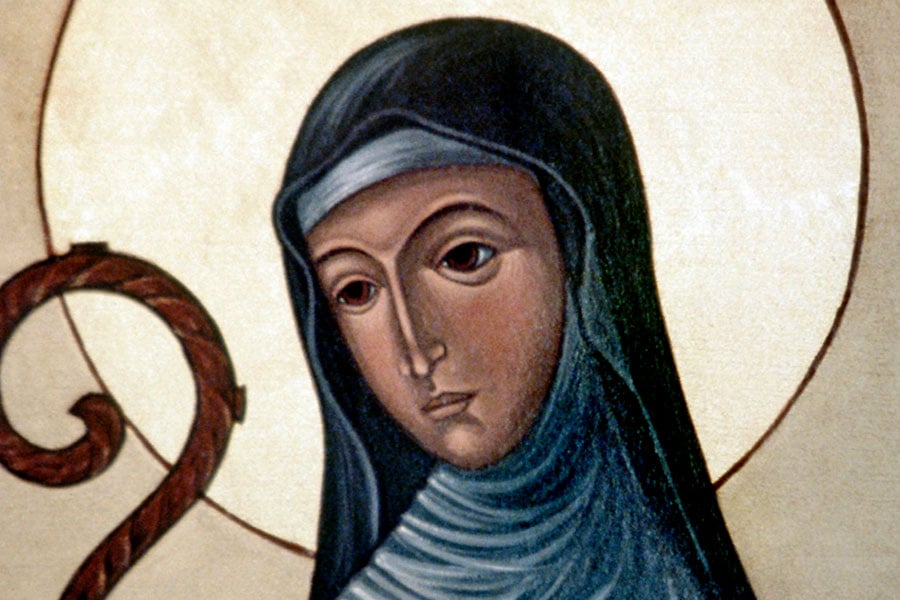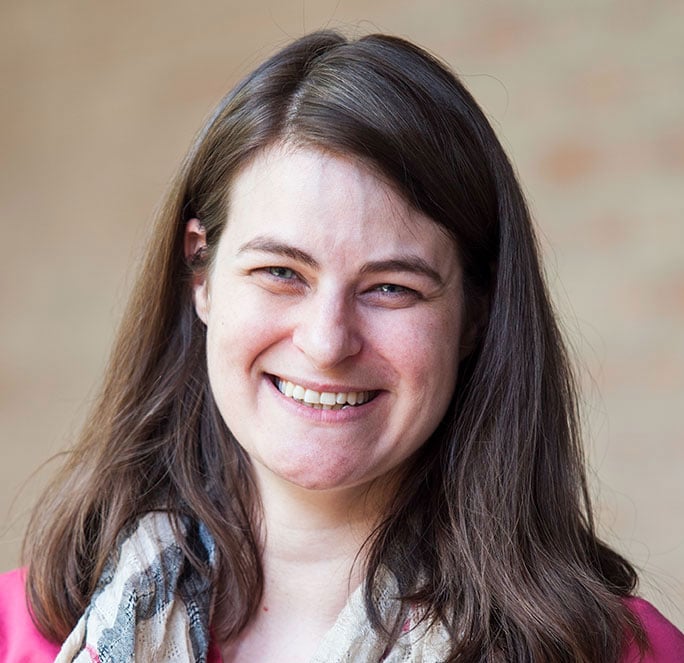Let us lectio: the better part

Memorial of Saint Scholastica, February 10
Steps to Lectio Divina
Start by using these steps to reflect on the Scripture verse. Then read Callie's meditation slowly.
Lectio: Having asked for the grace to hear God's word, read the passage twice.
Meditatio: During the second reading, pause whenever so moved and reflect on a word, a sentence, or an image that strikes you.
Oratio: Speak directly to God, and open your reflection to Him.
Contemplatio: Listen contemplatively for any response God might choose to make. Remember that God responds to us at times with loving silence.
The Scripture
Luke 10:38-42
Jesus entered a village where a woman whose name was Martha welcomed him.
She had a sister named Mary who sat beside the Lord at his feet listening to him speak.
Martha, burdened with much serving, came to him and said, "Lord, do you not care that my sister has left me by myself to do the serving? Tell her to help me."
The Lord said to her in reply, "Martha, Martha, you are anxious and worried about many things. There is need of only one thing. Mary has chosen the better part and it will not be taken from her."
Reflection
In today’s reading, Mary is praised for choosing the better part. But what is this “better part”?
Over the years, I have thought and prayed long and hard about what was better — what was “the better part” that this Scripture describes. Some say that religious/consecrated life is ontologically better. And while I certainly see their point, living and working for many years as a layperson, I would focus on finding “the better part” in my day-to-day routine in the midst of the vocation I found myself in.
But at their core, these two perspectives are not in conflict with each other. Nor are lay, consecrated, or priestly vocations in conflict or even competition with each other. Without the tapestry of vocations, just as the parts of the body described in 1 Corinthians, where would we be as a Church, the body of Christ?
Without the priest, where would we be without the sacraments? Without single and married in community together, where is the mutual support of family life? Without religious supporting both of the complementary vocations, where would we be? We’d be without a section of the palette of these rich colors in the tapestry of creation. And the Body of Christ would be weaker and even lacking in some of the shine that glorifies God. There would be a true loss in the Body of Christ, without each and every one of these vocations living to their fullest. Each vocation should complement, should support, and should even promote the other two.
Taking another look at the scene, in ancient near Eastern practices, the hospitality of a stranger or guest — in the absence of a man of the house — would be offered a solitary room or tent given for his or her respite. Providing for this separate room along with all they would need, such as food and water, would be done to both protect and honor the woman and provide for the guests, which, particularly in desert terrains, would be at risk of death without the hospitality of neighbors. In this context, Mary’s actions to sit at Jesus’ feet would have been even more scandalous than merely not helping Martha. So again, what could this “better part” be that she risks scandal?
All vocations are based in the foundation of faithfulness, responding to His grace in the day-to-day reality. With this in mind, indeed Martha and Mary were well versed in the customs of welcoming a guest. Each knew their part to play. But here in Mary’s day-to-day life she has encountered the divine. And having discovered Jesus, she seeks Him beyond her social confines, even if it risks ridicule and defamation. Jesus was worth the risk to her.
I do not wish to shame Martha. Nor do I want to simplistically say these two women reflect the active (Martha) and contemplative (Mary) life of the religious experience. Mary’s choice of “the better part” has nothing to do with disparaging Martha’s gifts or vocation in this scene. Rather they are complementary in their nature.
Jesus visits his friends Martha and Mary. He is a guest to both of them in their home. Each in their own way have an opportunity to individually receive Jesus. Mary, within her domestic vocation, encounters the reality of Jesus in her midst and hears the call to encounter Jesus in a more intentionally focused way. Mary here is choosing Jesus beyond and even in spite of the expected social constraints. That being said, Martha’s service supports this bold and vulnerable action on Mary’s part.
The common thread to all these interpretations is that “the better part” is to choose Jesus radically, personally, and wholeheartedly where we find Him. Today, each of us are called from within our own vocations to depend radically on Him. In doing so, we respond to the call to greater intimacy with God. In doing so, may we also foster among us the openness and support for others to respond to Christ with confidence.

Callie Nowlin, MTS, is a regular contributor to the North Texas Catholic.
Scripture texts in this work are taken from the New American Bible, revised edition © 2010, 1991, 1986, 1970 Confraternity of Christian Doctrine, Washington, D.C. and are used by permission of the copyright owner. All Rights Reserved. No part of the New American Bible may be reproduced in any form without permission in writing from the copyright owner.
